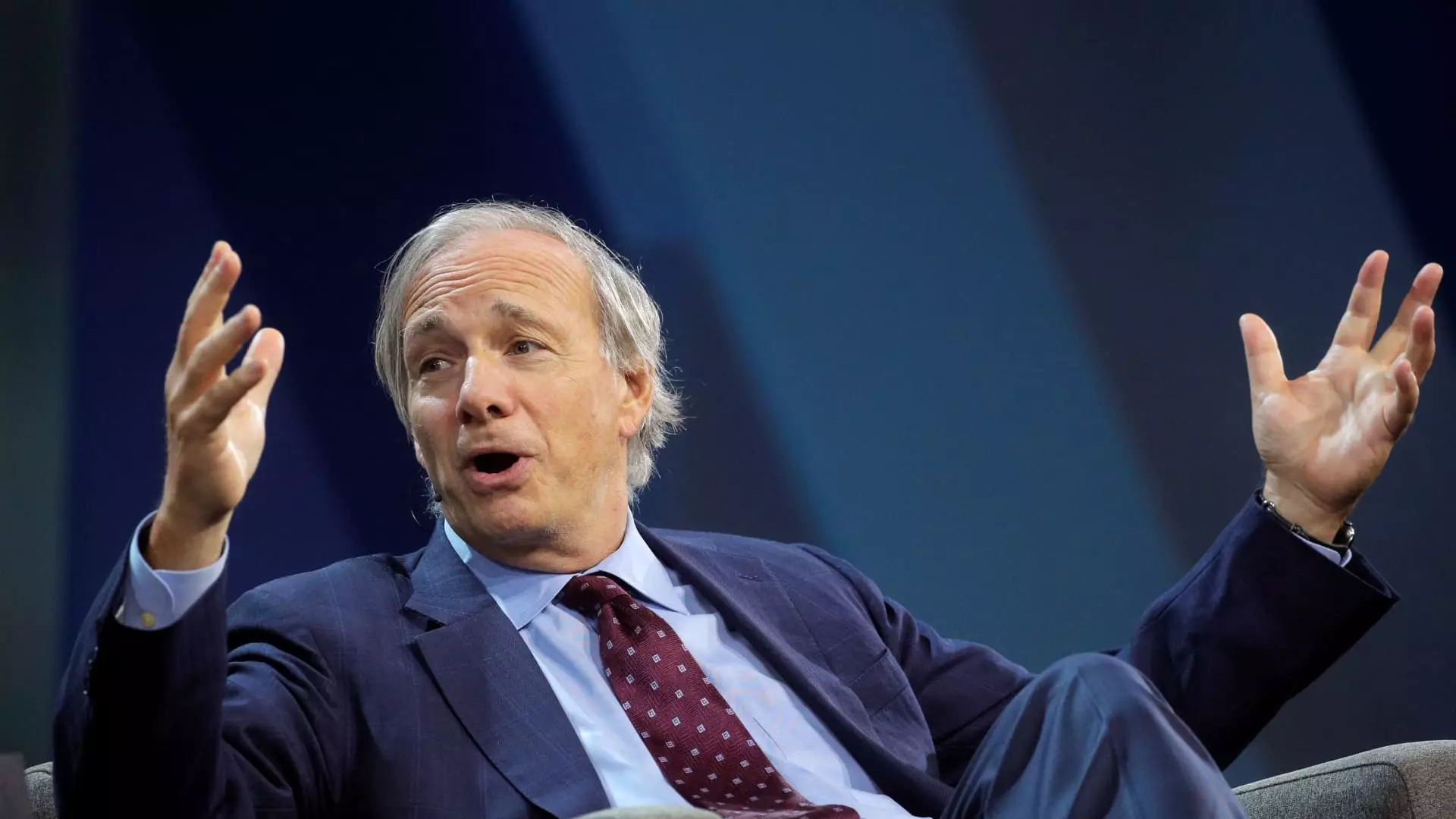The recent decision by the U.S. Federal Reserve to cut interest rates for the first time since the onset of the Covid-19 pandemic has sent ripples through financial circles and among economic analysts. This strategic move—reducing the federal funds rate by 50 basis points to a range of 4.75% to 5%—was intended to stimulate economic activity by lowering borrowing costs. However, this comes amid warnings from prominent figures like billionaire investor Ray Dalio, who highlights the massive debt burden that continues to loom over the U.S. economy. As rates lower, the balance between creditor and debtor interests remains complex and fraught with challenges.
Dalio’s observations are grounded on a stark reality: the U.S. national debt has reached staggering levels, surpassing $35 trillion, leading to unprecedented interest payments that have already exceeded $1 trillion this fiscal year. The implications of this significant debt increase are concerning, especially in light of a growing budget deficit projected to near $2 trillion. The conundrum faced by policymakers is that, although lower interest rates may ease immediate financial burdens for consumers and businesses, they simultaneously make it more challenging for the federal government to maintain debt sustainability.
This dilemma becomes particularly pressing when considering how the Federal Reserve must navigate its dual mandate: supporting an economy still recovering from pandemic disruptions, while also ensuring that creditors do not face untenable risks. Dalio aptly describes this situation as a balancing act, suggesting that the central bank’s actions must carefully weigh the benefits of reduced borrowing costs against potential risks of heightened inflation and long-term financial instability.
The phenomenon of debt monetization—when governments finance spending by creating new money—has been prevalent globally, particularly during the pandemic. Major economies resorted to increasing their debt loads to stave off financial crises, a trend that Dalio notes has “never existed” in his lifetime. This raises critical questions about the long-term repercussions of such policies. Is the current economic equilibrium sustainable? Or are we simply delaying an inevitable reckoning?
Dalio’s insights suggest a future trajectory for the U.S. that might resemble Japan’s prolonged experience with low-interest rates and significant debt loads. Japan’s approach resulted in a depreciating yen and substantial losses in bond values. The U.S. may face a similar fate if the debt continues to rise unchecked and the Fed opts to maintain low rates to support a fragile economy.
Compounding these economic pressures are the political realities in play. Dalio expresses concern that neither Donald Trump nor Kamala Harris will prioritize debt sustainability, raising fears that aggressive borrowing and spending policies may persist regardless of who wins the next presidential election. This potential continuation of irresponsible fiscal policy drives home the urgency for greater scrutiny of how debt is managed in the U.S.
Moreover, Dalio’s statement about an anticipated depreciation of debt value underscores the complex interplay between fiscal policy and market stability. He warns that without sufficient demand for government bonds, interest rates may need to rise, or the Fed may have to engage in direct market interventions. Such scenarios could signal a troubling trend towards increased Federal Reserve involvement—a move Dalio describes as a “very significant bad event.”
As the supply of government bonds increases, questions arise about the long-term viability of such fiscal strategies. Dalio posits that the nature of fiat currency means that central banks can continue to purchase unsold debt, avoiding immediate crises that might arise under a hard money system. However, this path carries its own sets of risks, including potential inflationary pressures that could diminish the purchasing power of all currencies relative to one another.
The specter of an economic environment reminiscent of the 1970s or the tumultuous years from 1930 to 1945 looms large among analysts. Without a careful re-examination of debt policies and interest rate strategies, the U.S. could find itself navigating through turbulent waters marked by repeated cycles of inflation, stagnation, and financial instability.
In light of the Federal Reserve’s recent actions and the concerning debt situation, the path forward requires a delicate balance of strategies that promote economic recovery while safeguarding against unsustainable debt levels. As illustrated by Dalio’s analyses, the risks involved in ignoring debt sustainability could have far-reaching implications for the economy, warranting both caution and foresight as policymakers chart a course through uncertain economic waters. The road ahead will demand not only astute financial management but also a collective commitment to addressing the structural challenges that persist within the U.S. economy.



Leave a Reply